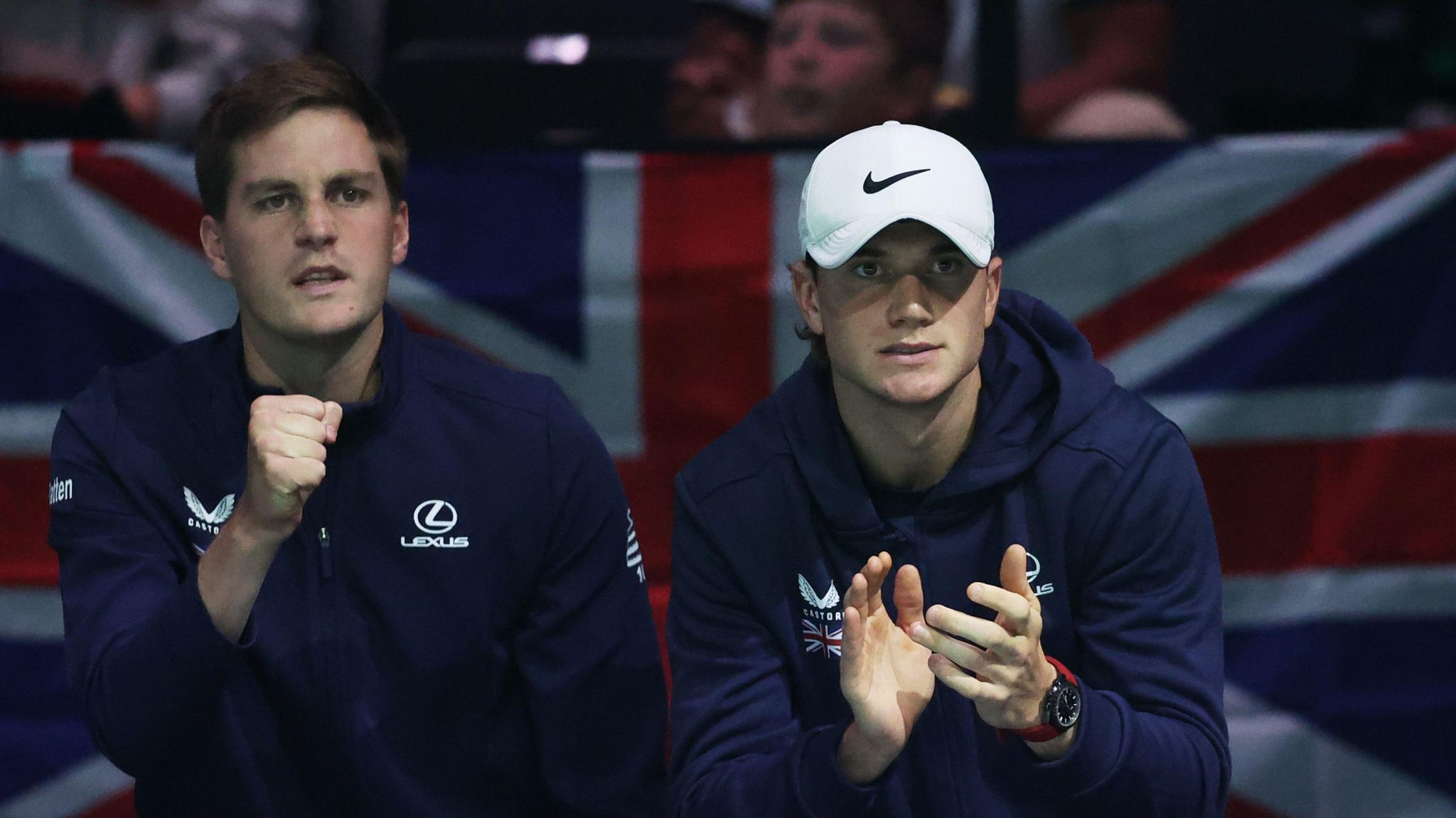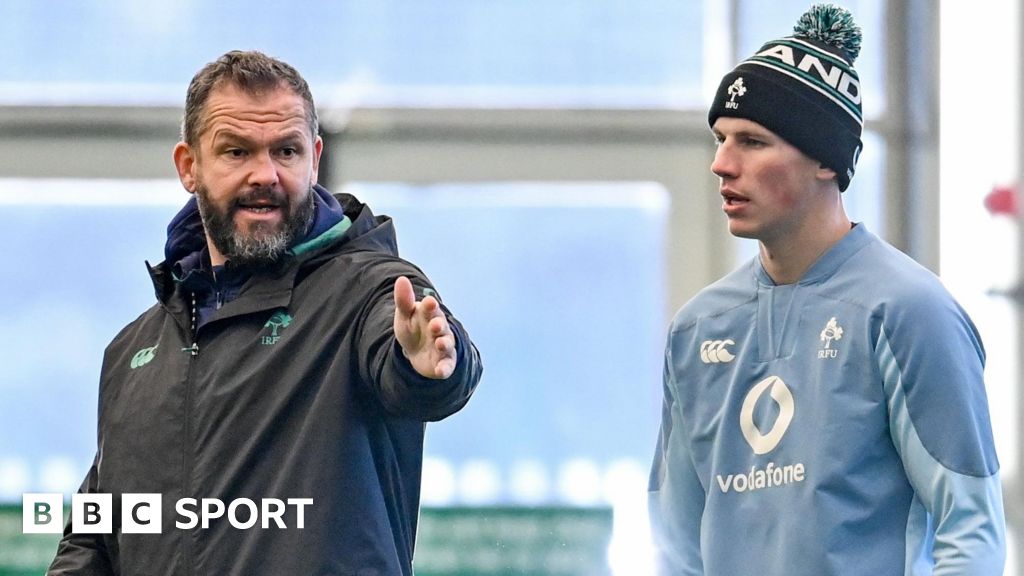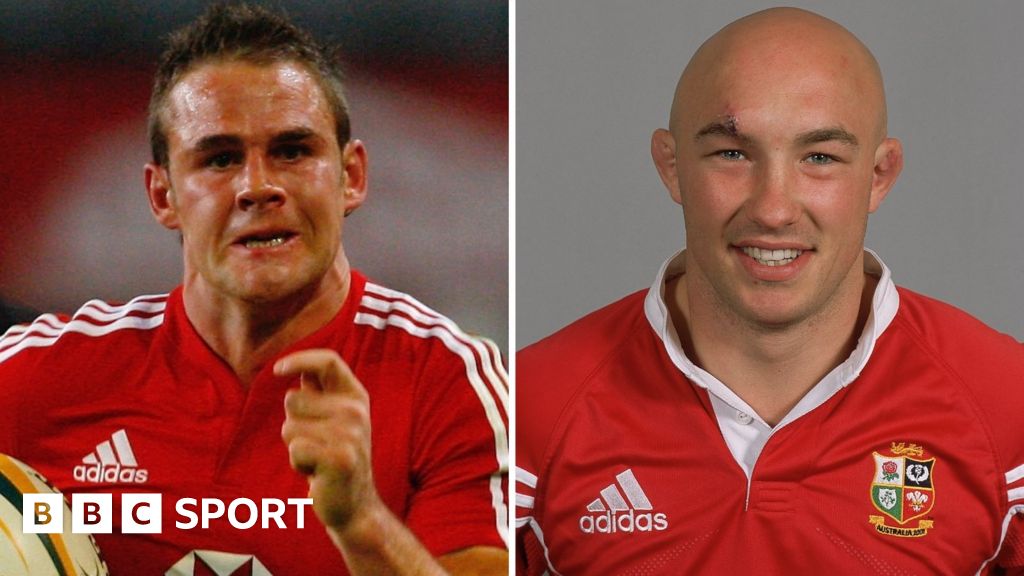ARTICLE AD BOX
 Image source, Getty Images
Image source, Getty Images
Jack Draper (right) has been the centre of British attention after his run to the US Open semi-finals
Jonathan Jurejko
BBC Sport tennis news reporter
For so long, Andy Murray has been the epicentre of British tennis.
It goes without saying the sport will not be the same without a superstar who brought unparalleled success, shifted the dial of expectation and raised standards across the board.
Strong showings by Britain's next generation at the recent US Open, though, provided optimism for anyone worrying how the void might be filled.
With New York semi-finalist Jack Draper receiving a hero's welcome on his return home, the Davis Cup event in Manchester presented the opportunity to gauge the mood without the talismanic Murray.
Even though the men's team were ultimately unable to progress to the quarter-finals stage in front of a record 15,700 crowd, the feelgood factor was not diminished.
"We've moved on from Andy Murray. We're not looking back to the past. We're looking to the future," said Jan Harris, a long-time member of the British Association of Tennis Supporters (BATS).
Emma Raducanu, who is the only Briton other than Murray to win a Grand Slam singles title in the past 20 years, drew criticism for saying tennis "moves on quickly", external in the wake of his retirement.
In truth, it was a pragmatic assessment which has been echoed by many at the Manchester Arena over the past week.
"Andy was a once-in-a-lifetime player and an incredible asset for our sport, in terms of raising visibility and bringing new fans into tennis," said LTA chief executive Scott Lloyd.
"But the future is also looking bright."
Who could be part of the future?
British number one Draper arrived in Manchester fresh from his exploits in New York, receiving an ebullient ovation from the proud home supporters who recognised the perfect timing of his success.
Long considered as the heir to Murray, Draper's breakout Grand Slam performance came in the first major since the former world number one's retirement.
Leading the hopes of the nation, in the Davis Cup at least, is a responsibility which has already been bestowed upon Draper.
"I think he will handle it well. We can't shy away from it - he will be a focal point," said Leon Smith, head of British men's tennis and Davis Cup captain.
"But that is why it is important to have other players up to shoulder some of that."
Draper is the only British player aged 22 or under currently in the men's top 250, although 23-year-old Jacob Fearnley has entered the conversation after soaring up to a career-high 129th by sweeping up his third ATP Challenger title of the year.
Image source, Getty Images
Image caption,Fearnley has made incredible strides in the professional ranks since graduating from college in the United States just four months ago
On the women's side, 21-year-old Raducanu - back inside the top 75 after seeing her progress derailed by injuries - is the obvious choice when predicting who might challenge at the very top.
Sonay Kartal is the only other Briton aged 22 or under inside the women's top 100. A childhood rival of 2021 US Open champion Raducanu, she crowned her recent acceleration with a maiden WTA title on Sunday.
And what about the even younger talent coming through? The eye-catching performances of the British juniors at the US Open bode well.
Mika Stojsavljevic, 15, provided the perfect pick-me-up from Draper's exit by winning the girls' singles a day later, while 16-year-old Mimi Xu and 17-year-old Charlie Robertson showed their huge potential by reaching the last four.
Henry Searle, 18, is continuing his development after becoming the first Briton to win the Wimbledon boys' singles last year.
Then there is Hannah Klugman, a 15-year-old who won the prestigious Orange Bowl title last year.
“There is a feelgood factor at the moment, there is no doubt," said veteran Dan Evans, who became Britain's second most capped Davis Cup player last week.
"There are some good stories but there is a big difference between the stories and putting it out there on the court."
What indicates success for Britain?
Murray has been the main protagonist in British tennis for the past two decades, but there has been support from others who have created storylines.
Only Raducanu has managed to win a Grand Slam singles title, however, following her fairytale of New York as a teenage qualifier.
Johanna Konta reached three major semi-finals between 2016 and 2019, with Kyle Edmund and Cameron Norrie matching that feat at the 2018 Australian Open and 2022 Wimbledon.
Added to that, Jamie Murray, Joe Salisbury, Neal Skupski and Henry Patten have all lifted Grand Slam doubles trophies since 2016.
Murray's three victories put Britain joint 11th on the list of nations with the most Grand Slam men's singles titles in the Open era
Britain's six victories put them ninth on the list of nations with the most Grand Slam women's singles titles in the Open era
So what constitutes success for British tennis - now and in future years? It is a point which has been debated for most of the past two decades.
Is it more Grand Slam singles champions like Murray and Raducanu?
Is it more players ranked inside the world's top 100?
Or is it attaining larger participation figures across the nation?
"Of course, the answer is we strive towards all of these," said Lloyd.
"Having Grand Slam champions is no mean feat but of course having players go deep in the biggest events brings visibility and inspiration for all our tennis fans and player base, and helps to encourage youngsters to pick up a racquet.
"The more players we have competing in the top 200 in the world helps push and pull all our players to the best they can be."
Great Britain have two men and four women in the world's top 100s, compared to Australia (10 men, one women), France (10 men, five women) and the United States (nine men, 15 women)
Currently there are six players - Draper, 28-year-old Katie Boulter, 29-year-old Norrie, 28-year-old Harriet Dart, Raducanu and new entrant Kartal - in the singles top 100s.
Billy Harris, who made his Davis Cup debut aged 29 last week, and 34-year-old Evans are among another eight Britons ranked inside the top 200.
"When you look back at the fact that at some points Andy was our only male player in top 200 of the rankings, we certainly have far more depth these days," said Lloyd.
However, that pales in comparison to the numbers produced by Australia, France and the United States - who, like Britain, have the benefit of being a cash-rich Grand Slam nation.
All three nations have strong numbers in the ATP top 100, although Australia only have one player in the WTA top 100.
Argentina, who beat Britain in the Davis Cup on Friday, and Italy also have strength in depth on the ATP side, while Russia and the Czech Republic have produced talented pools in the WTA.
"We would love to have what Argentina have but I keep saying time and time again, we don't have the numbers or ecosystem yet to allow that to happen," added Smith.
Image source, BBC Sport
Image caption,France have 11 players in the ATP top 100, followed by Australia (10), Argentina, Italy and the United States (nine), Spain (six), Germany and Russia (five)
Image source, BBC Sport
Image caption,The United States have 15 players in the WTA top 100, followed by Russia (12), the Czech Republic (seven), Italy, China, Ukraine and France (five)
Will Murray's absence affect interest?
As some fans already look to the future, it will be fascinating to see the post-Murray effect on British interest in the sport.
Put simply, Murray has stuck bums on seats. The signs, though, have been encouraging.
The opening Davis Cup tie against Finland - played on a midweek afternoon during school term-time - was watched by about 6,500 fans.
Crowds built steadily throughout the week-long event and culminated in a sell-out 15,700 attendance on Sunday.
"Whether you like it or not, Andy Murray sold the tickets before - that's the bottom line. That's how we got people through the door," said Evans.
"So without him, getting over 15,000 is an exceptional effort."
Setting a new British Davis Cup record - even when the chances of Smith's squad earning a clean sweep of Canada to progress - was quite the statement.
So how can the mood of the immediate post-Murray landscape be summed up?
While observing in a city which loves to trade on its musical heritage, a line from seminal Manchester indie band, the Stone Roses, succinctly does the job.
'The past was yours. But the future's mine.'

 2 months ago
11
2 months ago
11








 English (US)
English (US)